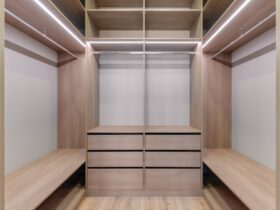When it comes to giving your dog a secure, comfortable, and functional personal space, few tools are as effective as a well-chosen crate. Whether you’re house-training a puppy, transporting a pet, or simply offering a safe retreat at home, selecting the correct crate can have a significant impact on your dog’s behavior and well-being. With so many options available, choosing the right crate can feel overwhelming—but it doesn’t have to be.
Why Crate Training Matters
Before diving into how to choose the right crate, it’s worth understanding why crate training is so effective. A crate mimics a natural den-like environment. It offers a sense of security, reduces anxiety, and can help prevent destructive behavior when you’re not around. Crates also help with house-training, teaching your dog to control their bladder and respect boundaries.
However, for a crate to be a helpful and positive tool, it must be correctly sized and appropriately chosen for your dog’s breed, behavior, and routine.
Understanding Crate Types
When shopping for dog crates, you’ll encounter several common types:
- Wire Crates: These are collapsible, well-ventilated, and often include divider panels to adjust the interior size.
- Plastic Crates: Great for travel, especially airline use, offering a more enclosed and cozy atmosphere.
- Soft-Sided Crates: Lightweight and portable, but best for calm dogs that won’t chew or scratch.
- Heavy-Duty Crates: Made from aluminum or steel, ideal for escape artists or powerful breeds. These often come at a premium price but offer unmatched strength and security.
Each type serves a unique purpose, and the right one for your dog depends on both your lifestyle and your pet’s specific needs.
The Importance of Crate Size
One of the most critical aspects of choosing the right crate is selecting the correct size. Many pet owners make the mistake of buying a crate based on how big their dog is today, without considering growth (for puppies) or how much space their dog actually needs.
A crate should be large enough for your dog to stand up, turn around, and lie down comfortably. However, it should not be so large that your dog can eliminate in one corner and sleep in another—this defeats one of the main purposes of crate training.
Use these general guidelines to determine the right size:
- Small breeds (up to 25 lbs): Crates around 24 inches in length
- Medium breeds (25–50 lbs): Crates 30–36 inches
- Large breeds (50–90 lbs): Crates 36–42 inches
- Extra-large breeds (90+ lbs): Crates 42–54 inches
Always measure your dog’s length from nose to tail base, and their height from floor to the top of their head or ears while sitting. Then add 2–4 inches to each dimension to determine ideal crate size.
Other Factors to Consider
Beyond size and type, consider these additional elements when choosing the right crate:
- Portability: Do you need a crate that folds down or fits in a car trunk?
- Ease of cleaning: Removable trays and easy-to-clean materials are essential, especially for puppies.
- Security features: Strong latches, locks, and door placements can make a difference, especially for energetic dogs.
- Ventilation: Good airflow is important for your dog’s comfort and health, especially in warm climates.
Brand Reputation and Durability
While it’s tempting to shop based on price alone, durability should be a priority. A cheap crate may save you money upfront, but a broken latch, bent door, or uncomfortable interior can lead to stress—or even injury—for your dog.
Reputable brands like Impact Dog Crates are known for their long-lasting, escape-proof designs that cater to both everyday pet owners and professional handlers. Their aluminum crates are a popular choice for those seeking strength, quality craftsmanship, and peace of mind during travel or crate training.
Training Tips for Crate Success
Even the best crate won’t help if your dog isn’t properly introduced to it. Here are a few tips:
- Make it inviting: Use treats, toys, and soft bedding to turn the crate into a positive space.
- Take it slow: Let your dog explore the crate at their own pace. Avoid forcing them inside.
- Stick to a routine: Consistency is key. Use the crate during naps, quiet time, and short absences.
- Never use the crate for punishment: The crate should always be associated with safety, not fear.
- Be patient: Some dogs take longer than others to adjust. Celebrate small wins and stay consistent.
When to Upgrade Your Crate
As your dog grows or your needs change, don’t hesitate to reevaluate your crate. A puppy may need a crate with a divider that can expand over time. A dog that becomes more destructive might require a stronger model. And if you begin to travel more, switching to a travel-approved crate can make a world of difference.







Leave a Reply